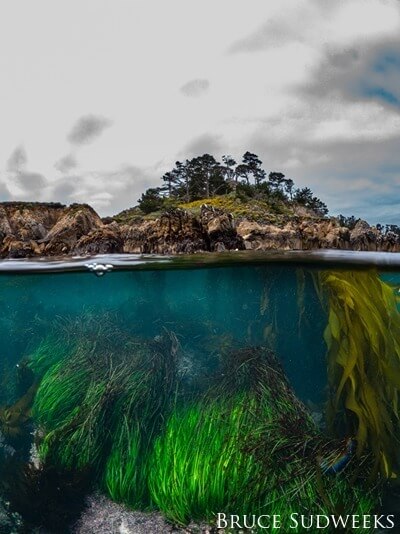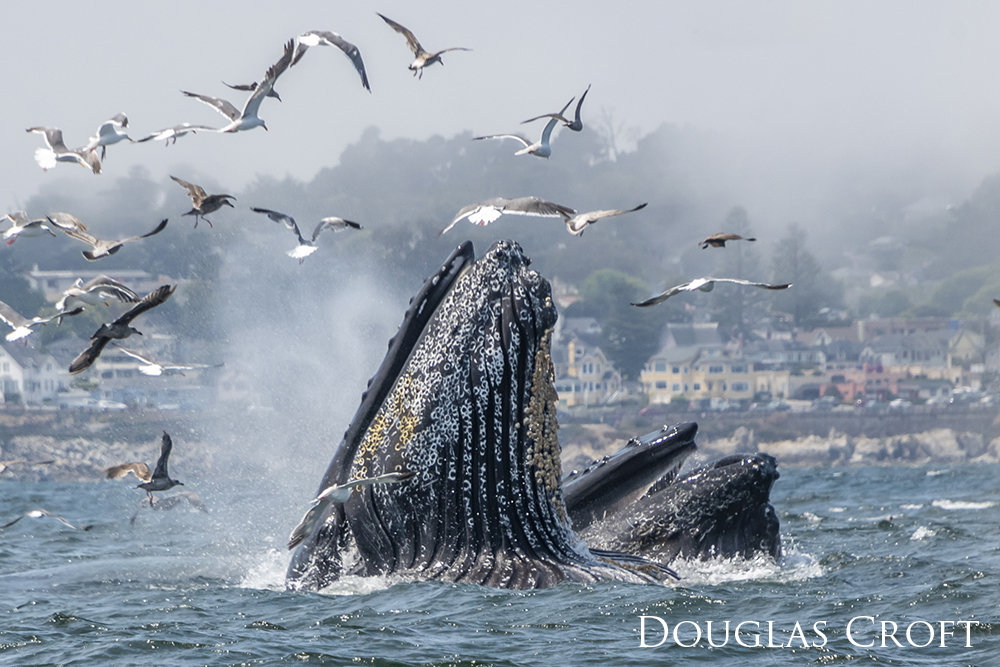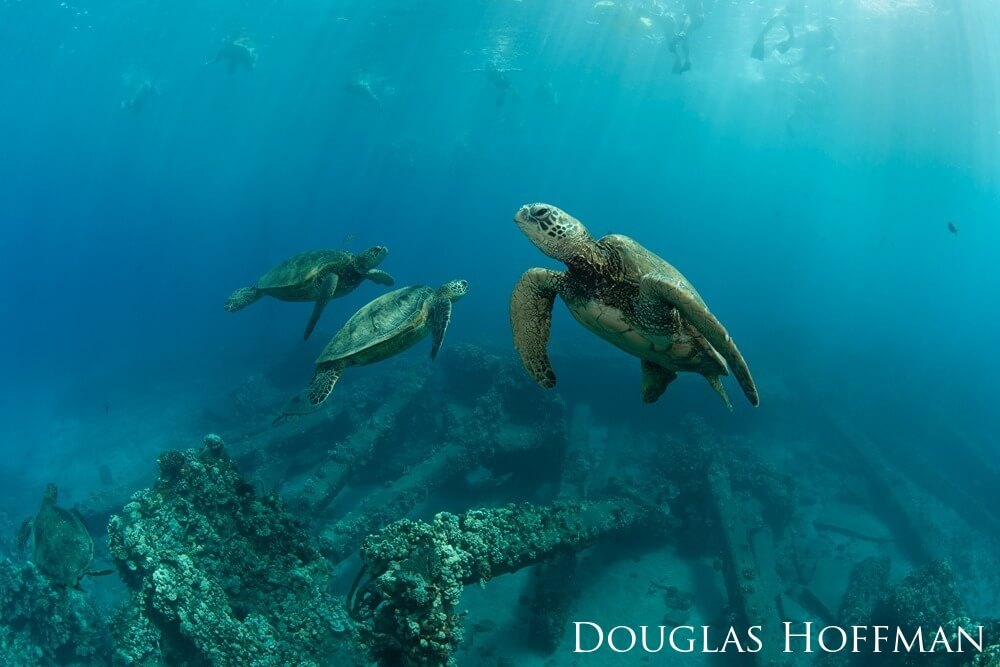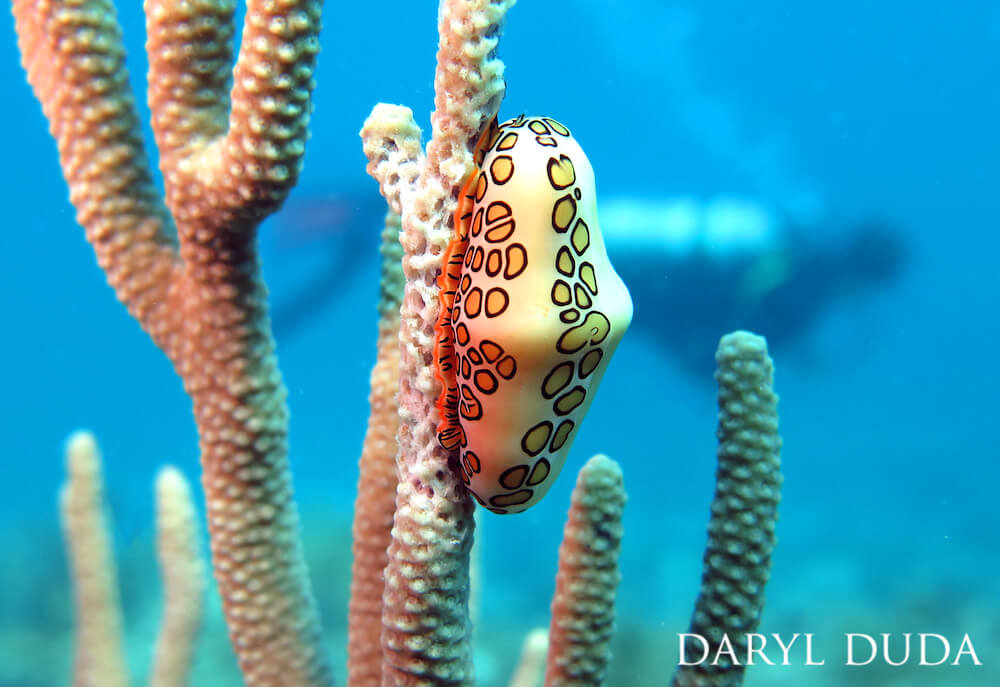August 2024
Our national marine sanctuaries are home to stunning views, majestic marine life, and opportunities to explore, recreate, and discover. Every summer from Memorial Day to Labor Day, NOAA’s Office of National Marine Sanctuaries and the National Marine Sanctuary Foundation celebrate all the different ways we can connect with our sanctuaries through the annual Get Into Your Sanctuary Photo Contest.
For the past decade, hundreds of photographers have entered their photos into the contest for consideration by a panel of expert judges. After winners are selected from each category (Sanctuary Views, Sanctuary Life, Sanctuary Recreation, Sanctuaries at Home, and Sanctuaries Around The World), the National Marine Sanctuary Foundation hosts the Discover Wonder People’s Choice, where the public casts their votes to decide the fan-favorite photo from all the first place category winners.
We spoke with some of the photographers whose iconic images won our Get Into Your Sanctuary Photo Contest in previous years. Let’s look behind the lens and get their top tips of how to capture the perfect picture in and around national marine sanctuaries.
Here are four expert photography tips they shared:
1. Get Into Your Sanctuary Often and Explore the Possibilities!
Bruce Sudweeks is an avid scuba diver and underwater photographer who has been photographing wildlife such as nudibranchs, jellies, octopuses, and anemones under the backdrop of California’s kelp forests for many years. He also specializes in split shot images where half of the view is above the water’s surface, and the other half below. His photo of a simultaneous view of the land and sea at Point Lobos State Natural Reserve in Monterey Bay National Marine Sanctuary that captures surfgrass (Phyllospadix sp.) and giant kelp (Macrocystis pyrifera) under the surface of the ocean won the 2023 Sanctuary Views category.
Sudweeks doesn’t just go diving once or twice a year. He is out there on a weekly basis snapping photos. To capture something beautiful in a photograph, you have to first be there to witness that beauty with your own eyes. Truly, the first step to getting an incredible photograph in a national marine sanctuary is to get into nature often! The famed author Cheryl Strayed once quoted a piece of advice her mother gave her: “There's always a sunrise and always a sunset, and it's up to you to choose to be there for it. Put yourself in the way of beauty.”

“My advice for getting an image that you are pleased with is to get into your sanctuary, often. You have to be ready at the right time and place because wildlife is unpredictable, ocean conditions vary, and sunsets don’t pop every evening” - Bruce Sudweeks, 2023 Sanctuary Views 1st Place Winner
2. Don’t Forget to Focus - Check Your Camera Settings.
Douglas Croft has been photographing wildlife since 2010. A San Jose, California, resident, one of his favorite locations to photograph is Monterey Bay National Marine Sanctuary. His photo of humpback whales and seabirds feeding on anchovies within the sanctuary won the 2018 Sanctuary Life category and captures the exciting frenzy that occurs when these large, majestic animals feed at the surface, and how this unique behavior helps sustain other animals in the food web.

“I usually shoot from a whale watching boat in the heart of Monterey Bay National Marine Sanctuary. On the water, everything is moving. The water is moving, the boat is moving and the wildlife is moving. My best photography tips for passengers aboard whale watch vessels are:
1. Use a fast shutter speed. At least 1/1600 to keep from going home with blurry photos.
2. Wedge yourself in somewhere. Lean against the rail or the cabin. Take keeping your balance out of the equation. That way, all of your concentration can be on getting the animals in frame and in focus. That’s hard enough without trying not to fall.” - Douglas Croft, 2018 Sanctuary Life 1st Place Winner
Everything in nature is in constant motion, with some things moving slowly, and others faster than the blink of an eye. As the photographer, you will need to think ahead about your subject and adjust your camera settings and your position accordingly. Ask yourself, ‘What behavior is your subject displaying and where is it likely to go next? How fast is it moving? What specific moment in this behavior do I want to capture and how do I want to portray it?’
3. Set the Scene - Find Your Frame and Let it Tell the Story.
Based on the Hawaiian island of Maui, Douglas Hoffman has spent over 12,000 hours in the water as an underwater photographer and developed an intimate knowledge of the marine environment and wildlife that call this place home.

“My best tip is to place the elements within the frame, so the composition tells the story” – Douglas Hoffman, 2023 Sanctuary Life 1st Place Winner and 2023 Discover Wonder People’s Choice winner
It is the photographer’s job to arrange the elements within the frame in a way that enhances the visual impact and conveys an intended message. How you frame your subject is part of visual storytelling. Sometimes, natural or architectural elements such as underwater arches, shipwrecks, or other scuba divers can be used to frame your subject, adding context and depth to the image. Douglas Hoffman’s photo of three green sea turtles above a wreck in Hawaiian Islands Humpback Whale National Marine Sanctuary was the winner for the 2023 Sanctuary Life category.
“This reef is a popular dive and snorkel spot. In this image, snorkelers are watching three turtles hover around a cleaning station,” Hoffman explains in the contest entry form. These cleaning stations are where sea turtles go to have their shells cleaned off by algae-eating organisms. In the waters around Hawaii, there are several popular cleaning stations that turtles will frequent. As Hoffman’s winning photo accurately captures, the turtles will approach the cleaning station and assume a hovering position, which is an indication that cleaning is about to take place. Responsible snorkelers and divers can wait patiently and hang back at a safe distance to watch this beautiful ancient ritual take place. The turtles will come and go calmly and gracefully when left undisturbed.
4. Expect the Unexpected - Let Nature Unfold In Front of You.
Daryl Duda is a retired audio/video/film technician who moved to the Florida Keys and has been capturing underwater photographs for 17 years. His image of a flamingo tongue snail (Cyphoma gibbosum) on a soft coral won the 2022 Sanctuary Life category. Many divers might swim right past a patch of soft coral in search of larger megafauna, but if you are patient and look closely, sometimes unsuspecting, tiny, and/or camouflaged wildlife will reveal themselves to you.

“I can't tell you the number of times while underwater in Florida Keys National Marine Sanctuary that I see an image that I find almost unbelievable. I have to prove that I actually saw it and share it with others. That's what makes me keep on going back, to find yet something else incredible. It seems there is a never-ending supply of wonder in the National Marine Sanctuary System." - Daryl Duda, 2022 Sanctuary Life 1st Place Winner
The marine environment is full of surprises. Stay open to the unexpected, and let the wonders of nature unfold in front of you. When you are lucky enough to witness something spectacular, don’t hesitate to share the extraordinary moments you capture. Documenting and sharing these wonders can inspire others through imagery and contribute to the appreciation and preservation of marine sanctuaries. That’s what the Get Into Your Sanctuary Photo Contest is all about, after all!
The Get Into Your Sanctuary Photo Contest closes on September 2, 2024! Be sure to submit your photos on time and read the full contest rules and regulations,
Teresa Mackey is the communications manager at the National Marine Sanctuary Foundation
Rachel Plunkett is the content manager and senior writer/editor for NOAA’s Office of National Marine Sanctuaries

